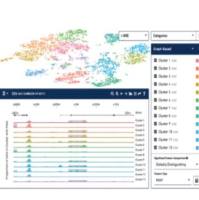Although more than 25,000 genes of Arabidopsis thaliana have been sequenced and mapped, adequate expression or functional information is available for less than 15% of them (1 ). In the case of Oryza sativa (rice), about half of more than 55,000 predicted genes have been assigned to a vague functional category on the basis of their sequence, but fewer than 100 have been ascribed a precise, verified function after the identification of a mutant phenotype caused by the molecular disruption of the corresponding gene (2 ). Enhancer detection and gene trapping represent insertional mutagenesis strategies that report random expression of many genes and often generate loss-of-function mutations. Several trapping vectors have been designed in a limited number of species, and large-scale enhancer detection and gene trap screens that aim to generate a wide range of spatially and temporally restricted expression patterns have been initiated in both Arabidopsis and rice. These strategies are proving to be essential to the functional annotation of completely sequenced genomes, enabling the analysis of gene function in the context of the entire plant life cycle and substantially expanding our understanding of plant growth and development.






